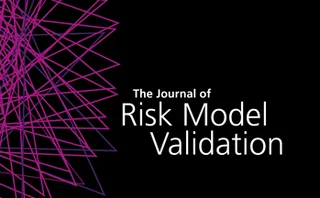Technical paper/Loss distribution
Bridging the gap risk reloaded: modelling wrong-way risk and leverage
A model extends the counterparty risk calculation to include nonlinear and complex portfolios
Central counterparty auction design
The authors analyze the role of auctions in managing the default of a central counterparty’s clearing member.
Risk capital reserve and measurement precision in modeling heavy-tailed single operational losses
This paper provides a rationale for adopting quantitative buffer capital, designed to absorb variations due to measurement errors, especially those originating from the estimation risk.
Estimation of value-at-risk for conduct risk losses using pseudo-marginal Markov chain Monte Carlo
The authors propose a model for conduct risk losses, in which conduct risk losses are characterized by having a small number of extremely large losses (perhaps only one) with more numerous smaller losses.
Sample dependence of risk premiums
This paper discusses the framework within which to study how sample dependence is transferred from the data to the premiums via the density.
Keep it real: tail probabilities of compound distributions
Igor Halperin proposes new approach to compute probabilities of heavy-tailed distributions
Modeling very large losses
In this paper, the author presents a simple probabilistic model for aggregating very large losses into a loss collection.
A central limit theorem formulation for empirical bootstrap value-at-risk
In this paper, the importance of the empirical bootstrap (EB) in assessing minimal operational risk capital is discussed, and an alternative way of estimating minimal operational risk capital using a central limit theorem (CLT) formulation is presented.
Rapidly bounding the exceedance probabilities of high aggregate losses
The authors of this paper assess the right-hand tail of an insurer’s loss distribution for a specified period (a year), presenting and analyzing six different approaches in doing so.
Loss distributions: computational efficiency in an extended framework
This paper contributes to the literature for mixture models by leveraging an efficient algorithm for computing the density function of the loss distribution and extending the model in two key areas: constructing the systemic variable from a continuous…
The robustness of estimators in structural credit loss distributions
This paper examines the performance of MM, ML and OLS estimators through Monte Carlo experiments for various sample sizes and correlation values when the true data is from non-Gaussian processes.
Comparative analysis of credit risk models for loan portfolios
In this paper, the authors compare credit risk models that are used for loan portfolios, both from a theoretical perspective and via simulation studies.







